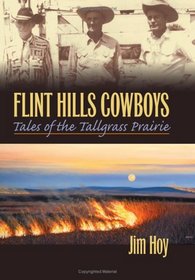Search -
Flint Hills Cowboys: Tales of the Tallgrass Prairie
Flint Hills Cowboys Tales of the Tallgrass Prairie
Author:
The Flint Hills are my home country, the land that nurtured my life and nourished my soul. My roots here are as deep as those of bluestem grass in black-soil bottomland. . . . I was reared among cattle and horses, ranchers and cowboys, pasture work and rodeos, and that is the Hills that I know and these are the stories I've heard.--Jim Ho... more »
Author:
The Flint Hills are my home country, the land that nurtured my life and nourished my soul. My roots here are as deep as those of bluestem grass in black-soil bottomland. . . . I was reared among cattle and horses, ranchers and cowboys, pasture work and rodeos, and that is the Hills that I know and these are the stories I've heard.--Jim Ho... more »
ISBN-13: 9780700614561
ISBN-10: 0700614567
Publication Date: 4/27/2006
Pages: 319
Rating: ?
ISBN-10: 0700614567
Publication Date: 4/27/2006
Pages: 319
Rating: ?
0 stars, based on 0 rating
Publisher: University Press of Kansas
Book Type: Hardcover
Members Wishing: 1
Reviews: Amazon | Write a Review
Book Type: Hardcover
Members Wishing: 1
Reviews: Amazon | Write a Review
Genres:
- Biographies & Memoirs >> General
- History >> Americas >> United States >> General
- History >> Americas >> General
- Travel >> United States >> Regions >> Central




